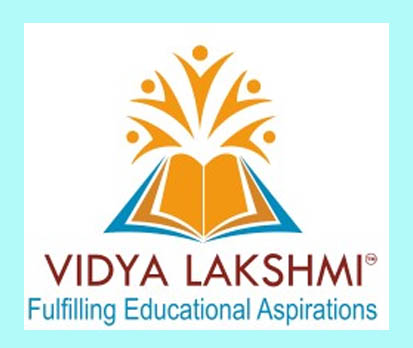
In a transformative step for the future of higher education in India, the Union Cabinet, chaired by Prime Minister Narendra Modi, approved the PM-Vidyalaxmi Scheme on November 6, 2024. The scheme is designed to remove financial barriers for deserving students, ensuring that monetary constraints do not deter them from accessing quality education at India’s premier institutions. Speaking about the scheme, Union Minister Ashwini Vaishnaw emphasized its commitment to supporting meritorious students by providing them with seamless access to funds for higher education through collateral-free, guarantor-free loans.
The PM-Vidyalaxmi Scheme is expected to be a landmark policy initiative for enhancing accessibility to higher education in India, especially for those who qualify for admission to the country’s top institutions but lack the financial means to complete their studies. By covering both tuition fees and associated academic expenses, the scheme is expected to benefit more than 22 lakh students, helping them access the resources they need to succeed academically and professionally.
Key Features of the PM-Vidyalaxmi Scheme
- Eligibility for Students in Top-Ranked Institutions
- The PM-Vidyalaxmi Scheme targets students who secure admission to Quality Higher Education Institutions (QHEIs), identified based on the National Institutional Ranking Framework (NIRF) ratings.
- The eligible institutions include:
- Higher Education Institutions (HEIs) ranked within the top 100 in NIRF in overall, category-specific, and domain-specific rankings.
- State government HEIs ranked between 101 and 200 in the NIRF.
- All central government-run institutions, regardless of their NIRF rank.
- This policy ensures that students attending the most prestigious institutions in the country receive the financial support they need to complete their studies, fostering an environment where academic potential, rather than financial background, determines success.
- Collateral-Free, Guarantor-Free Loans
- A core aspect of the PM-Vidyalaxmi Scheme is its provision for collateral-free and guarantor-free educational loans.
- Unlike traditional student loans that often require guarantors or collateral, the Vidyalaxmi scheme ensures that meritorious students can access funding without needing a third party to vouch for them or risking their family’s assets.
- These loans will cover not only tuition fees but also other course-related expenses, enabling students to focus on their studies without the constant worry of mounting financial pressure.
- Loan Coverage and Repayment Flexibility
- The loans under this scheme will cover the full tuition fees and academic-related expenses, including books, accommodation, and other necessary resources.
- To make repayment manageable, the government is expected to implement flexible repayment options. Though full details of the repayment plans are yet to be announced, they will likely include a grace period post-graduation to allow students to establish themselves professionally before beginning repayment.
- Dynamic Eligibility Based on NIRF Rankings
- To maintain the quality standards of institutions covered under the scheme, the list of QHEIs will be updated annually using the latest NIRF rankings.
- This approach allows the scheme to stay current with the changing educational landscape, ensuring that the list of eligible institutions reflects only those providing the highest quality education. For 2024, the scheme covers 860 QHEIs, including a mix of government and private institutions.
Addressing India’s Education Inequality and Creating Future Leaders
India has long struggled with issues of economic disparity and educational inequality, which have prevented talented students from lower-income families from realizing their full potential. For many students, the high costs associated with higher education have been an insurmountable obstacle. By eliminating these financial roadblocks, the PM-Vidyalaxmi Scheme aims to create a level playing field for all students, irrespective of their economic backgrounds.
Quality higher education can be a significant driver of social mobility, and the PM-Vidyalaxmi Scheme recognizes this by prioritizing accessibility. Not only does this initiative promise to support over 22 lakh students, but it also aims to cultivate a generation of well-educated professionals who can contribute meaningfully to the economy and society.
Boosting India’s Global Educational Standing
By promoting inclusivity in higher education and prioritizing support for students at the nation’s best institutions, the PM-Vidyalaxmi Scheme is likely to improve India’s educational standards on the global stage. With financial burdens lifted, students will be able to focus on research, innovation, and the pursuit of academic excellence, ultimately strengthening India’s intellectual capital.
The emphasis on NIRF-ranked institutions also serves a dual purpose: it encourages institutions to improve their standards to make it to the top 100 list, while offering students a guarantee that their education will meet the highest standards. This focus on merit-based support for education aligns well with the government’s broader goals of transforming India into a knowledge-based economy and boosting national productivity.
Implementation and Future Prospects
The PM-Vidyalaxmi Scheme has been lauded as a forward-thinking initiative that balances both social and economic objectives. However, its success will depend heavily on its implementation. Ensuring seamless coordination between banks, financial institutions, and educational institutions is vital for the smooth processing of loans and for keeping student beneficiaries informed.
Looking ahead, the government may consider expanding the scheme to include skill-based courses and professional training programs, particularly in areas with high employability potential, such as information technology, artificial intelligence, healthcare, and environmental sciences. This expansion could make the scheme more inclusive and responsive to the evolving needs of the job market.
Conclusion: A New Dawn for Higher Education in India
The PM-Vidyalaxmi Scheme marks a pivotal moment in India’s journey towards equitable and inclusive higher education. By enabling students to pursue quality education without the weight of financial constraints, this scheme not only addresses the current educational inequalities but also builds a foundation for a more robust, diverse, and skilled workforce.
As India continues to grow as a global economic and educational hub, initiatives like the PM-Vidyalaxmi Scheme will play a critical role in shaping the country’s future. This policy not only offers hope to deserving students but also sends a powerful message about the government’s commitment to investing in its young minds and building a prosperous, knowledge-driven nation.